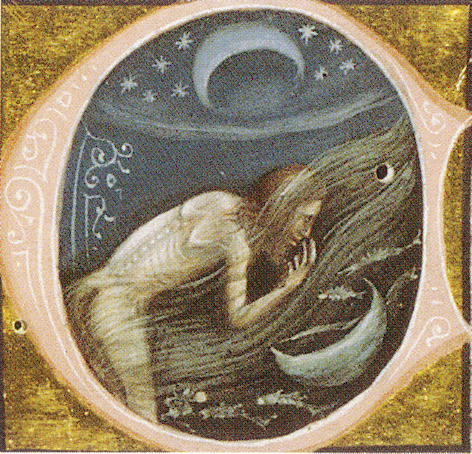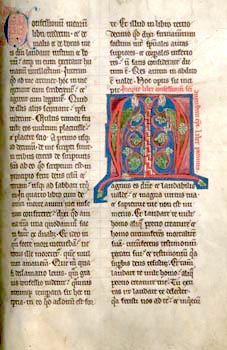|
Bury Chronicle
The Bury Chronicle ( or ), Bury St Edmunds Chronicle, or Chronicle of Bury St Edmunds, formerly also known as the ("Abbreviated Chronicle"), is a medieval English chronicle compiled by John of Taxster and two other unknown Benedictine monks of Bury St Edmunds Abbey in the 13th and 14th centuries. Authorship The first part of the Bury Chronicle was compiled by John of Taxster or Tayster, who claimed to have joined the monastery in 1244 or 1255. Galbraith makes the first date that of Taxster's vows and the second that of the first continuator's. The issue is somewhat obscured by the mistaken dual chronology introduced by Marianus Scotus and employed by John of Worcester and Taxster. From the year 1265, another monk continued his work and, from Easter 25 March 1296, a third monk continued their work. The second authoroften but baselessly identified as John of Everdenalso revised Taxster's account, including some additional information on the monastery's finances and adding severa ... [...More Info...] [...Related Items...] OR: [Wikipedia] [Google] [Baidu] |
Chronicle Of The Abbey Of St Edmund
__NOTOC__ The Chronicle of the Abbey of St Edmunds is a chronicle concerning the history of the Benedictine abbey at Bury St Edmunds in Suffolk, England, between the years 1173 and 1202. It was written either in 1198 or 1202 by Jocelin of Brakelond, a monk at the abbey. John Gage Rokewode published an edition of the Latin chronicle in 1840. An annotated translation was then published by Thomas Edlyne Tomlins in 1844. Thomas Carlyle's '' Past and Present'', contrasting medieval and modern culture, prominently featured Abbot Samson as presented by the Chronicle. Other editions include Ernest Clarke's in 1903 and Diana Greenway & Jane E. Sayers's in 1989. References Citations Bibliography * . * . * . * . * . * . * External links Lane's editionat Fordham University Fordham University is a Private university, private Society of Jesus, Jesuit research university in New York City, United States. Established in 1841, it is named after the Fordham, Bronx, Fordham neighborhood o ... [...More Info...] [...Related Items...] OR: [Wikipedia] [Google] [Baidu] |
Golden Ass
The ''Metamorphoses'' of Apuleius, which Augustine of Hippo referred to as ''The Golden Ass'' (Latin: ''Asinus aureus''), is the only ancient Roman novel in Latin to survive in its entirety. The protagonist of the novel is Lucius. At the end of the novel, he is revealed to be from Madaurus, the hometown of Apuleius himself. The plot revolves around the protagonist's curiosity (''curiositas'') and insatiable desire to see and practice magic. While trying to perform a spell to transform into a bird, he is accidentally transformed into an ass. This leads to a long journey, literal and metaphorical, filled with inset tales. He finally finds salvation through the intervention of the goddess Isis, whose cult he joins. Origin The date of composition of the ''Metamorphoses'' is uncertain. It has variously been considered by scholars as a youthful work preceding Apuleius' ''Apology'' of 158–159, or as the climax of his literary career, and perhaps as late as the 170s or 180s. Apuleiu ... [...More Info...] [...Related Items...] OR: [Wikipedia] [Google] [Baidu] |
Augustine's Confessions
''Confessions'' (Latin: ''Confessiones'') is an autobiographical work by Augustine of Hippo, consisting of 13 books written in Latin between AD 397 and 400. The work outlines Augustine's sinful youth and his conversion to Christianity. Modern English translations of it are sometimes published under the title ''The Confessions of Saint Augustine'' in order to distinguish the book from other books with similar titles. Its original title was ''Confessions in Thirteen Books'', and it was composed to be read out loud with each book being a complete unit. ''Confessions'' is generally considered one of Augustine's most important texts. It is widely seen as the first Western autobiography ever written (Ovid had invented the genre at the start of the first century AD with his ''Tristia'') and was an influential model for Christian writers throughout the Middle Ages. Henry Chadwick wrote that ''Confessions'' will "always rank among the great masterpieces of western literature". Summary T ... [...More Info...] [...Related Items...] OR: [Wikipedia] [Google] [Baidu] |
Augustine Of Hippo
Augustine of Hippo ( , ; ; 13 November 354 – 28 August 430) was a theologian and philosopher of Berber origin and the bishop of Hippo Regius in Numidia, Roman North Africa. His writings deeply influenced the development of Western philosophy and Western Christianity, and he is viewed as one of the most important Church Fathers of the Latin Church in the Patristic Period. His many important works include '' The City of God'', '' On Christian Doctrine'', and '' Confessions''. According to his contemporary, Jerome of Stridon, Augustine "established anew the ancient Faith". In his youth he was drawn to the Manichaean faith, and later to the Hellenistic philosophy of Neoplatonism. After his conversion to Christianity and baptism in 386, Augustine developed his own approach to philosophy and theology, accommodating a variety of methods and perspectives. Believing the grace of Christ was indispensable to human freedom, he helped formulate the doctrine of original sin and m ... [...More Info...] [...Related Items...] OR: [Wikipedia] [Google] [Baidu] |
Onomasticon (Eusebius)
The ''Onomasticon'' (, ), more fully ''On the Place Names in the Holy Scripture'' (, ), is a gazetteer of historical and then-current place names in Palestine and Transjordan compiled by Eusebius (c. AD 260/265–339), bishop of Caesarea, and traditionally dated to sometime before 324. The ''Onomasticon'' sits uneasily between the ancient genres of geography and lexicography, taking elements from both but serving as a member of neither. It is widely considered the most important book for the study of Palestine in the Roman period. Its influence can be detected both in the Madaba map and the accounts of early Christian pilgrims, and it most probably contributed to the Christian pilgrimage of the 4th century, constructing " The Holy Land" as a unifying idea for Christians. Even so, it appears that the Onomasticon was not meant to be a guide for pilgrims, as it did not mention places to be venerated, rather, its target audience was biblical scholars and the composition was ... [...More Info...] [...Related Items...] OR: [Wikipedia] [Google] [Baidu] |
Eusebius Of Caesarea
Eusebius of Caesarea (30 May AD 339), also known as Eusebius Pamphilius, was a historian of Christianity, exegete, and Christian polemicist from the Roman province of Syria Palaestina. In about AD 314 he became the bishop of Caesarea Maritima. Together with Pamphilus, Eusebius was a scholar of the biblical canon and is regarded as one of the most learned Christians during late antiquity. He wrote the ''Demonstrations of the Gospel'', '' Preparations for the Gospel'' and ''On Discrepancies between the Gospels'', studies of the biblical text. His work '' Onomasticon'' is an early geographical lexicon of places in the Holy Land mentioned in the Bible. As "Father of Church History" (not to be confused with the title of Church Father), he produced the ''Ecclesiastical History'', ''On the Life of Pamphilus'', the ''Chronicle'' and ''On the Martyrs''. He also produced a biographical work on Constantine the Great, the first Christian Roman emperor, who was ''Augustus'' between A ... [...More Info...] [...Related Items...] OR: [Wikipedia] [Google] [Baidu] |
Jerome
Jerome (; ; ; – 30 September 420), also known as Jerome of Stridon, was an early Christian presbyter, priest, Confessor of the Faith, confessor, theologian, translator, and historian; he is commonly known as Saint Jerome. He is best known for his translation of the Bible into Latin (the translation that became known as the Vulgate) and his commentaries on the whole Bible. Jerome attempted to create a translation of the Old Testament based on a Hebrew version, rather than the Septuagint, as Vetus Latina, prior Latin Bible translations had done. His list of writings is extensive. In addition to his biblical works, he wrote polemical and historical essays, always from a theologian's perspective. Jerome was known for his teachings on Christian moral life, especially those in cosmopolitan centers such as Rome. He often focused on women's lives and identified how a woman devoted to Jesus should live her life. This focus stemmed from his close patron relationships with several pro ... [...More Info...] [...Related Items...] OR: [Wikipedia] [Google] [Baidu] |
Eutropius's Breviarium
Eutropius (–387) was a Roman official and historian. His book summarizes events from the founding of Rome in the 8th century BC down to the author's lifetime. Appreciated by later generations for its clear presentation and writing style, the can be used as a supplement to more comprehensive Roman historical texts that have survived in fragmentary condition. Life The exact background and birthplace of Eutropius is disputed. Some scholars claim he was born in Burdigala (Bordeaux) and was a man of medicine. Others, most notably Harold W. Bird, have dismissed these claims as being highly unlikely. Eutropius has been referred to as 'Italian' in other sources and supposedly held estates in Asia. Aside from that, his name was Greek, making it unlikely he came from Gaul. Confusion about this has arisen because Eutropius was a popular name in late antiquity. Some believed him to have had Christian sympathies because in some manuscripts of his work he refers to Emperor Julian as an "ex ... [...More Info...] [...Related Items...] OR: [Wikipedia] [Google] [Baidu] |





